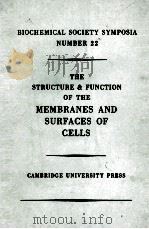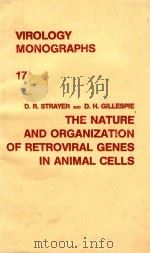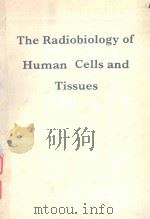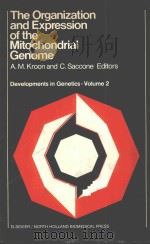《The Organization of Cells and Other Organisms》
| 作者 | Laurence Picken 编者 |
|---|---|
| 出版 | At The Clarendon Press |
| 参考页数 | 630 |
| 出版时间 | 1960(求助前请核对) 目录预览 |
| ISBN号 | 无 — 求助条款 |
| PDF编号 | 818143458(仅供预览,未存储实际文件) |
| 求助格式 | 扫描PDF(若分多册发行,每次仅能受理1册) |

Ⅰ.THE ORGANIZATION OF CELLS AND OTHER ORGANISMS1
1.The cell concept:old causes célèbres1
2.The unit of life confronted with bacterium and virus4
3.The antithesis:structure and function6
4.Catalysts and the general principles of their structure and mode of action8
5.The structure of enzymes and the mechanism of enzyme catalysis9
6.Chains of processes and the coupling of reactions13
7.The reciprocal relationship between structure and activity15
8.Some types of organisms21
Ⅱ.THE ORGANIZATION OF VIRUSES23
1.Introduction23
2.The chemistry of viruses25
3.The aggregation and crystallization of virus particles28
4.The structure of virus particles31
5.The structure of virus particles as revealed by the effects of radiation36
6.Virus in action:38
(a)Animal and plant viruses38
(b)Bacteriophage41
(ⅰ) The genetics of 'phage44
(ⅱ) Productive infection and lysogenesis49
7.Macromolecular organization in viruses50
Ⅲ.THE ORGANIZATION OF CERTAIN SCHIZOMYCETES53
1.Eubacteriales:53
(a)Bacterial genetics53
(b) The killing of bacteria by radiation as a key to the genetic organization of the Eubacteriales56
(c) Cytological evidence for the presence of a 'nuclear' apparatus in bacteria57
(d) A general picture of bacterial organization61
(e)The chemical morphology of the bacterial surface62
(ⅰ) The structural implications of Rough and Smooth forms63
(ⅱ) Surface polysaccharide,surface protein,and surface lipid63
(ⅲ) The significance of the Gram reaction64
(ⅳ) The morphological significance of suspension stability66
(ⅴ) The analysis of surface structure by the methods of immunology67
(ⅵ) The evidence for enzymic activities in the plasma membrane72
(ⅶ) The permeability of the capsule and the site of the osmotic barrier beneath the encapsulated surface73
(ⅷ) The composition of bacterial cell walls75
(ⅸ) The mechanical properties of the bacterial surface76
(f) The structure of bacterial flagella and their relation to movement77
(g) Aspects of growth,division,and colony formation81
(h) Adaptation and mutation85
(i) Transformation88
(j) Macromolecular orglanization in bacteria89
2.The morphology of the Spirochaetales in the light of macromolecular structure92
Ⅳ.THE ORGANIZATION OF CELLS97
A.THE NUCLEUS97
1.Introduction97
2.The interphasic,interkinetic,'resting',or non-mitotic nucleus:101
(a)Introduction101
(b) Mechanical and colloidal properties104
(c) Chemical properties106
(d) Optical properties108
(e) The nucleolus110
(f) The nuclear membrane111
3.The Chromosomes:113
(a)Optical properties113
(b) Mechanical properties113
(c) Chemical composition116
(d) The constitution of the chromosomes in mitosis and meiosis119
(e) The multiplication of chromosomes124
4.The evidence for chromosomal activity130
5.The movements of chromosomes (other than anaphase movement)135
6.The role of the nucleus in cellular economy137
7.The evolution of the genetic systems of eucells and the generation of the phenotype146
Ⅴ.THE ORGANIZATION OF CELLS152
B.THE CYTOPLASM152
Ⅰ.Bulk properties152
1.The concept of protoplasm152
2.The rheology of the cytoplasm and the notion of a framework157
3.Regional differences in bulk cytoplasmic properties164
4.Factors influencing cytoplasmic rigidity166
5.Amoeboid movement and cytoplasmic streamng169
6.Orientation in the cytoplasm176
7.The chemical structure of the cytoplasm178
8.The problem of the state of the cytoplasmic proteins180
9.Cytoplasmic ribonucleoproteins181
10.The mechanical fractionation of cytoplasmic particles185
11.Vacuoles and vacuole formation189
Ⅵ.THE ORGANIZATION OF CELLS194
B.THE CYTOPLASM194
Ⅱ.Cytoplasmic particulates and membrane-systems194
1.The structure and properties of mitochondria:195
(a)Introduction195
(b) Shape,movement,and behaviour in the living cell195
(c) The transformation of isolated mitochondria and sarcosomes197
(d) The gross chemistry of mitochondria and their lipoprotein nature198
(e) Electron microscope studies of mitochondria200
(f)The enzymic properties and organization of mitochondria in bulk202
(ⅰ) Introduction202
(ⅱ) The enzymic properties of mitochondria202
(ⅲ) The electron transfer system204
(ⅳ) The problem of spatial organization204
(ⅴ) The role of phosphorylation206
(ⅵ) Other activities of mitochondria in bulk207
(g) The functions of mitochondria in intact cells208
(h) The effects of swelling on the enzymic properties of mitochondria210
2.The structure and organization of chloroplasts212
3.The structure of pyrenoids219
4.The structure of chromoplasts220
5.The yolk platelets of Amphibia220
6.Yolk spheres and the vitelline body or yolk nucleus222
7.The Golgi region:225
(a)The classical Golgi network and the results of electron microscopy225
(b) A component of certain Golgi regions:the dictyosome,lepidosome,or lipochondrion,and supposed evidence of its secretory activity227
(c) The chemical constitution of lipochondria in the Golgi region;of the Golgi region isolated in bulk;and of the acrosomic system230
(d) In vitro artefacts from cytoplasmic fractions232
(e) The 'canal' theory of the structure of the Golgi region234
(f) Chondriome and vacuome235
(g) The coacervate analogy236
(h) The postulated functions of the Golgi region236
(i) Supposed homologues of the Golgi region in Eumetazoa,Parazoa,and Protista237
8.Other cytoplasmic membrane systems242
Ⅶ.THE ORGANIZATION OF CELLS245
B.THE CYTOPLASM245
Ⅲ.Fibrillar cytoplasmic structure245
1.Introduction245
2.Polymerization and fibril formation:246
(a)Theoretical considerations246
(b) Tropomyosin and the role of electrostatic forces in linkage248
(c) Actin and the role of metallic ions in linkage248
(d) Myosin as a complex monomer249
(e) Fibrinogen and the role of hydrogen bonds in lateral association249
3.The initiation of orientation:251
(a)The parallel with ionotropic gels251
(b)Cell centres,centrospheres,centrioles,centrosomes,asters,and spindles252
(ⅰ) The presence or absence of microscopic organites with genetic continuity252
(ⅱ) Types of foci of orientation in the Protozoa,(α) Orthomitosis:mitosis with radial symmetry about the polar axis,(β) Pleuromitosis:mitosis with no symmetry about the polar axis258
(ⅲ) The genesis of the achromatic figure in metazoan eucells262
(ⅳ) The bulk isolation of the mitotic apparatus and the chemistry of orientation266
(ⅴ) The contractility of the mitotic apparatus267
(c)Blepharoplasts,basal granules,and kinetosomes268
(ⅰ) The structure and generation of sperm tails268
(ⅱ) Basal granules,basal corpuscles,kinetosomes,cilia,and flagella272
(ⅲ) The movements of sperm tails,cilia,and flagella274
4.Keratinization:275
(a)The qualitative cytochemistry of keratinization275
(b) The development of disulphide linkage,orientation,and longitudinal covalent linkage277
(c) The synthesis of keratin by polymerization278
(d) The shpe of keratinized cells and the orientation of the keratin chains278
(e) The proteins of keratinized cells279
(f) The building units of the keratins280
(g) The historical significance of the molecular properties of α-keratin in the elucidation of protein morphology283
5.Axon,axoplasm,and neurofibrils:286
(a)Qualitative evidence of molecular orientation in the axon286
(b) Quantitative studies of birefringence287
(c) The composition of the axon288
(d) Electron microscope studies of axon and axoplasm289
(e) The mechanical properties of the axon and factors determining stability289
(f) The evidence for textural change in the neuroplasm correlated with nervous activity291
(g) The origin of orientation in the axoplasm292
6.The organization of myofilaments and the architecture of muscle:293
(a)The origin of fibrillar structure in usele cells in ontogeny293
(b) The nature of striation and changes in it during stretching and contraction296
(c) Birefringence and striation302
(d) Large-,moderate-,and small-angle X-ray diagrams of muscle and the ordered state of the fibrillar muscle proteins303
(e) Order,disorder,and contraction305
Ⅷ.THE ORGANIZATION OF CELLS308
C.THE CELL SURFACE AND CELL MEMBRANES308
1.The cell surface:309
(a)The results and implications of permeability studies309
(b) The significance of the action of narcotics313
(c) The mechanical properties of the surface and their significance315
(d) The chemical and morphological significance of certain electrical properties of the surface318
(e) Active transport and surface enzymes320
(f) The morphological implications of electrical activity324
(g) The optical analysis of cell surface structure and the evidence for surface expansion327
(h) Electron microscope studies of cell membranes332
(i) The antigenic structure of the cell surface335
(j) Immunological reactions and the surface structure of gametes338
2.Laminated membranes:343
(a)The structure of the surface membranes of nerve fibres343
(ⅰ) The myelinated sheath of vertebrate nerves and the metatropic sheath of the nerves of invertebrates343
(ⅱ) The electron microscopy of the myelinated sheath of nerve347
(b) The structure of the outer segment of the rod in the vertebrate retina350
3.Cell walls and cell shape:353
(a)Plant cell walls,and principally cellulose walls354
(ⅰ) The middle lamella,primary wall,and secondary wall355
(ⅱ) The primary wall356
(ⅲ) The secondary wall359
(ⅳ) The relationship between cell wall and cytoplasm360
(ⅴ) Turgor and the mechanical properties of the cell wall of growing cells361
(ⅵ) Types of plant cell growth363
(b) Complexities of the wall and problems of helical symmetry in Euglenoidina366
(c) The shape and molecular organization of cells with chitinous walls370
(d) The mechanics and energetics of changes in cell shape373
Ⅸ.EXTRACELLULAR MATERIALS AND STRUCTURES AND THEIR ROLE IN THE SPATIAL EXTENSION OF CELLULAR ACTIVITIES379
1.Introduction379
2.The structure of collagen and the properties of its solutions:a study in the analysis of extracellular building materials382
3.The fibrogenesis of collagen in vivo as a type of procedure in extracellular architecture386
4.Ground substances:388
(a)Mucopolysaccharides and collagen388
(b) The mesogloea of the Cnidaria,and the role of ectodermal mucoid in coral formation390
5.Fibrillar collagens:393
(a)Spongins in the Parazoa393
(b) Corneins and gorgonins in the Cnidaria395
(c) The byssus of the Lamellibranchiata395
(d) Dermal fibrillar collagenous structures in the Arthropoda396
(e)Collagenous materials and structures in the Vertebrata397
(ⅰ) Reticulin397
(ⅱ) Elastin397
(ⅲ) Elastoidin399
(ⅳ)Dentine and enamel in the teeth of Vertebrata400
(α) Dentine400
(β) Enamel403
6.Collagen membranes and the architecture of fibrillar cuticles and basement membranes:405
(a)Nematoda,Nemertea,and Annelida405
(b) The basement membrane of the vertebrate epidermis407
(c) The egg capsule of selachians412
(d) Bone412
7.Chitins:417
(a)Cuticular chitins418
(ⅰ) Cnidaria418
(ⅱ) Nematoda418
(ⅲ) Mollusca418
(ⅳ) Brachiopoda,Annelida,and Onychophora419
(ⅴ) Arthropoda419
(b) The calcification of chitin427
8.Celluloses and the integument of the Tunicata430
9.The production of extracellular materials and the building of macroscopic organisms433
Ⅹ.BECOMING MULTICELLULAR AS SEEN IN THE LIGHT OF CELL PROPERTIES442
1.Introduction442
2.Preliminary analysis:443
(a)The life cycle of the Metazoa as an alternation of adhesive and non-adhesive cell states:cell cohesion as the unique prerequisite443
(b) The role of the hyaloplasm in adhesion and the nature of the hyaloplasm444
(c) The return of adhesive properties on fertilization447
(d) Adhesion in aggregates of non-embryonic or late-embryonic cells448
(e) The production of structural polysaccharides by the seaurchin egg452
(f) Factors influencing the shape and size of multicellular aggregates454
3.Historical interlude458
4.The properties of the surface coat of the amphibian egg:460
(a)General properties460
(b) The behaviour of the surface coat when injured461
(c) Surface movements simulating gastrulation463
(d) The role of surface properties in maintaining the integrity of the amphibian morula465
5.Gastrulation in the light of the properties of individual cells:466
(a)Local surface contraction and changes in cell shape in amphibian eggs466
(b) The generation of elastic force in the surface468
(c) Complementary surface expansion as a factor in gastrulation469
(d) The generation of local curvatures in epithelia in general471
(e) The cellular basis of gastrulation in sea-urchin eggs472
6.Cavities and the role of mucoproteins in their formation;473
(a)The blastocoel of echinoderms473
(b) The formation of cavities in Amphibia and other vertebrates474
(c) Coeloms and mesohyl475
7.Adhesion and affinity:477
(a)The role of affinity in self-differentiation in amphibian development477
(b) Changes in adhesional properties in other types of life history481
8.Concerning germ layers486
9.The temporal order of development489
10.Cleavage as the cellulation of a regionally and superficially heterogeneous egg493
11.Preformation and epigenesis500
ENVOI506
BIBLIOGRAPHY511
INDEX589
1960《The Organization of Cells and Other Organisms》由于是年代较久的资料都绝版了,几乎不可能购买到实物。如果大家为了学习确实需要,可向博主求助其电子版PDF文件(由Laurence Picken 1960 At The Clarendon Press 出版的版本) 。对合法合规的求助,我会当即受理并将下载地址发送给你。
高度相关资料
-

- THE CHEMISTRY OF MICRO ORGANISMS
- 1955 SIR ISAAC PITMAN & SONS LTD
-

- THE BIOLOGY OF CELLS
- JOHN WILEY & SONS
-

- THE ECONOMIC THEORY OF ORGANIZATION AND THE FIRM
- 1988 HARVESTER WHEATSHEAF
-

- Financial organization and operations of the IM
- 1995 International monetary fund
-

- The Organization of Cells and Other Organisms
- 1960 At The Clarendon Press
-

- HERMENEUTICS AND THE VOICE OF THE OTHER
- 1997 STATE UNIVERSITY OF NEW YORK PRESS
-

- THE EVOLUTION OF LIVING ORGANISMS
- 1962 MELBOURNE UNIVERSITY PRESS
-

- THE STRUCTURE AND FUNCTION OF THE MEMBRANES AND SURFACES OF CELLS
- 1963 AT THE UNIVERSITY PRESS
-

- THE STATE AND MOVEMENT OF WATER IN LIVING ORGANISMS
- 1965 AT THE UNIVERSITY PRESS
-

- THE NATURE AND ORGANIZATION OF RETROVIRAL GENES IN ANIMAL CELLS
- 1980 SPRINGER VERLAG
-

- THE RADIOBIOLOGY OF HUMAN CELLS AND TISSUES
- 1989 TAYLOR & FRANCIS LTD
-

- THE ORGANIZATION AND EXPRESSION OF THE MITOCHONDRIAL GENOME
- 1980 ELSEVIER BIOMEDICAL PRESS
提示:百度云已更名为百度网盘(百度盘),天翼云盘、微盘下载地址……暂未提供。➥ PDF文字可复制化或转WORD


